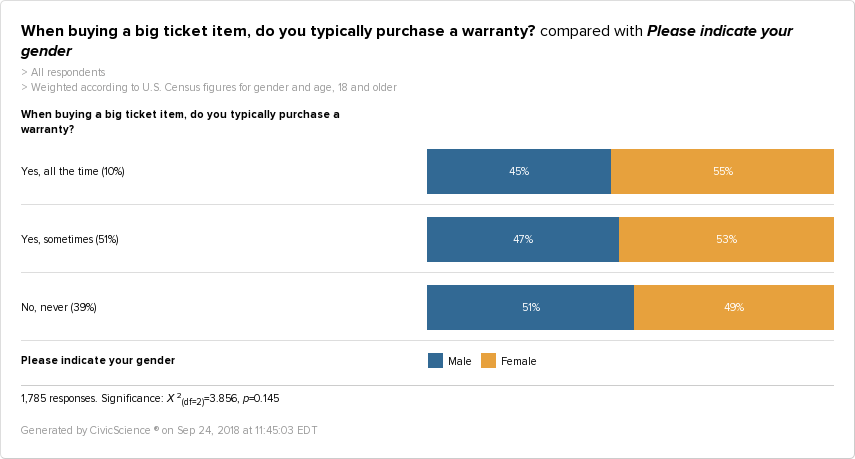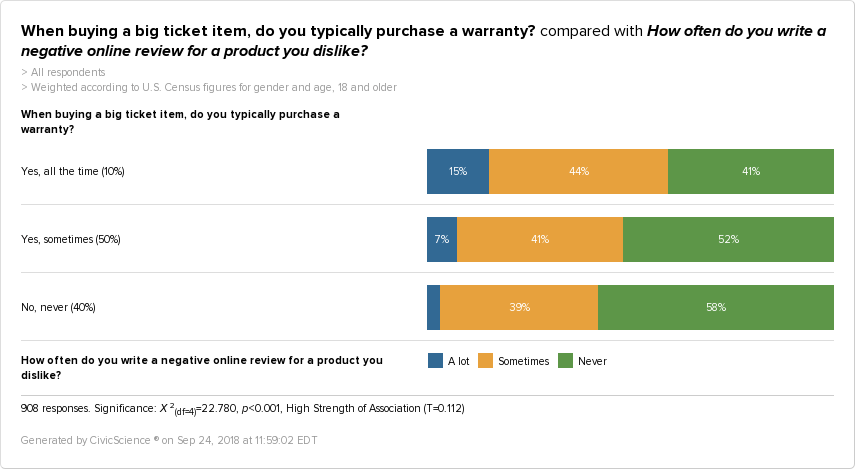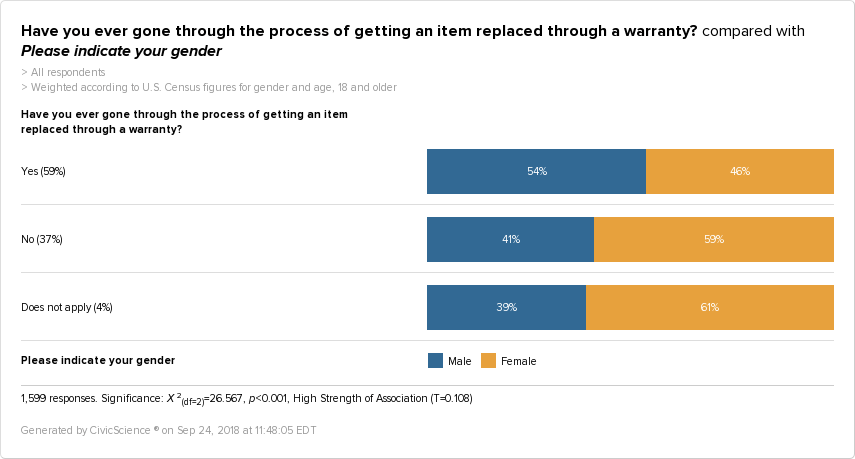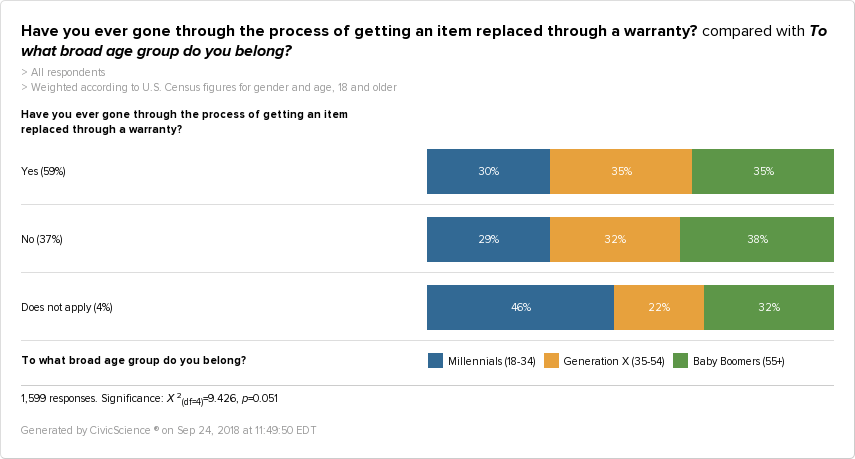When purchasing a big-ticket item, individuals are faced with a choice: to purchase the item as-is or opt for a warranty–an additional expense that could be useful, should the item experience any sort of malfunction later on.
CivicScience asked 1,713 U.S. adults about their experience with warranties. As it turns out, 51% of respondents purchase warranties sometimes.
Of those who do purchase warranties, the majority are women, making up 55% and 53% of those who always and sometimes purchase warranties, respectively.
The reason for this gender split is unclear. Could women be more likely than men to make big-ticket purchases? Or are men more confident in the success of the product? These are just a few of the factors to consider, that could be impacting who opts for a warranty and why.
Money is another potential influencer when it comes to warranties. Low-income earners make up 48% of those who say they purchase a warranty all the time. Although a warranty adds an additional upfront expense, it could provide greater peace of mind for those with a less flexible budget to know that they will be covered, later on.
The choice to purchase a warranty may also be trending amongst Millennials. This group makes up 39% of those who would rather be safe than sorry, always opting for a warranty.
But how does purchasing a warranty impact buyer confidence? According to the data, not very much.
63% of those who never buy warranties report making their decisions quickly and confidently, while 61% of those who do buy warranties report the same. With only two percentage points separating them, these numbers indicate that warranties may not give the total peace of mind that one might expect.
Although the inclination to buy a warranty may not be related to the level of confidence in decision-making, it could be related to brand loyalty. 21% of those who always purchase a warranty also frequently write positive online reviews for products they like.
On the other hand, only 15% of those who always buy warranties report that they frequently write negative reviews about products they dislike.
This suggests that warranties may serve a greater purpose not for the skeptics, but for the brand loyalists, eager to continue having a positive experience.
That said, purchasing a warranty and using it to replace a defective item are two different questions. The data shows that 59% of respondents have replaced an item through a warranty.

When looking at this question through the lens of gender, men make up 54% of those who have replaced an item through a warranty. This statistic is striking in contrast to the fact that women were more likely to buy the warranty in the first place.
The fact that women purchase warranties more often while men go through the process of replacing items through warranties suggests that there could be an unspoken yet very present division of labor when it comes to handling household tasks.
Contrasts between warranty purchasers and warranty users continue in light of income. Although low-income earners may be the most likely to purchase warranties, middle-income earners are the most likely to use them, making up 36% of those who have gone through the process of replacing an item with a warranty.

Similarly, Gen Xers report using their warranties most often, despite the fact that Millennials buy them more frequently.
The idea of replacing an item through a warranty often carries a certain amount of stigma, especially around the idea that the replacement process will be somewhat of a hassle. The data indicates the stigma may translate into real discontent.
Only 11% of those who have gone through the warranty replacement process say they often write positive reviews. Considering the fact that 21% of those who buy warranties indicate doing the same, something is causing this dramatic drop in review inclination. Could it be that warranty replacements are just more hassle than it feels they are worth? This is something brands may want to consider, especially to maintain their most loyal customers.
In 2018, warranties are gaining steam. Their popularity and usage, especially by low-income earners and younger generations, indicates that this form of purchase protection could expand in the coming years. Additionally, interest in warranties from positive review-writing customers could cue to businesses that a warranty, when applicable, is an excellent way to demonstrate a high level of customer service, that could keep buyers coming back, long into the future.


















